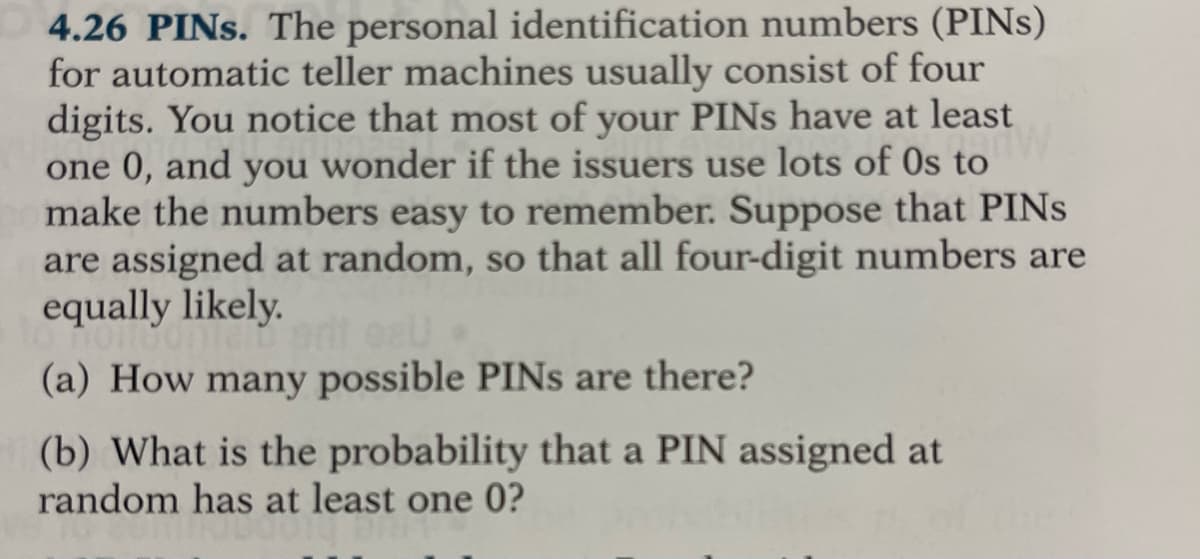4.26 PINS. The personal identification numbers (PINS) for automatic teller machines usually consist of four digits. You notice that most of your PINS have at least one 0, and you wonder if the issuers use lots of 0s to make the numbers easy to remember. Suppose that PINS are assigned at random, so that all four-digit numbers are equally likely. (a) How many possible PINS are there? (b) What is the probability that a PIN assigned at random has at least one 0?
4.26 PINS. The personal identification numbers (PINS) for automatic teller machines usually consist of four digits. You notice that most of your PINS have at least one 0, and you wonder if the issuers use lots of 0s to make the numbers easy to remember. Suppose that PINS are assigned at random, so that all four-digit numbers are equally likely. (a) How many possible PINS are there? (b) What is the probability that a PIN assigned at random has at least one 0?
Chapter8: Sequences, Series,and Probability
Section8.7: Probability
Problem 11ECP: A manufacturer has determined that a machine averages one faulty unit for every 500 it produces....
Related questions
Question

Transcribed Image Text:4.26 PINS. The personal identification numbers (PINS)
for automatic teller machines usually consist of four
digits. You notice that most of your PINS have at least
one 0, and you wonder if the issuers use lots of 0s to
make the numbers easy to remember. Suppose that PINS
are assigned at random, so that all four-digit numbers are
equally likely.
(a) How many possible PINS are there?
(b) What is the probability that a PIN assigned at
random has at least one 0?
Expert Solution
This question has been solved!
Explore an expertly crafted, step-by-step solution for a thorough understanding of key concepts.
This is a popular solution!
Trending now
This is a popular solution!
Step by step
Solved in 2 steps with 2 images

Recommended textbooks for you

